The domestic automotive industry has been in the doldrums for the last year and a half, with the commercial vehicle sector being one of the worst hit. Despite the challenging times, the results of the recent Lok-Sabha elections have brought about a thorough change in sentiments with hopes of a market recovery towards the end of the current year. The recent Noppen CV Summit held in Pune brought to light the views and suggestions of industry leaders about market trends, growth prospects, upcoming technology, etc. Given below are the highlights of some of the presentations made by them.
Indian CV industry will bounce back: BMGI CEO
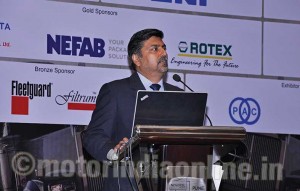
The commercial vehicle industry in India is currently witnessing a slowdown due to various bottlenecks faced by the road transport industry. However, the industry is expected to bounce back within the next 12 to 18 months.
This expert view was expressed by Mr. Naresh Raisinghani, CEO & Executive Director, BMGI, at the recently-held CV Summit in Pune. According to him, the current status of the Indian commercial vehicle industry is not that encouraging, with more than one-third of its capacity remaining unutilized. With growing vehicle density in India, there is wider scope now for infrastructural development and higher exports.
He said that, by 2020, around 40 per cent of the planned government investment will be on developing roads and ports. The market share of road transport would increase from the current 57 per cent to 69 per cent. There would also be better opportunities for OEMs to export their trucks and buses to markets like Africa, South-East Asia and the Middle East. At the same time, the overall Indian auto component market is expected to grow to $110-120 billion by 2020, of which exports would account for $25-30 billion.
Mr. Raisinghani urged OEMs to take an active role by designing the product to suit the changing customer needs by bringing the best of technology in the world to the widest market that India has access to. The Tier-I and Tier-II suppliers could look at cost cutting, optimising manpower utilisation and reducing material costs through value engineering and debottlenecking the capex.
He also advocated an addition of products and service lines, entering new geographies and expanding reach through channels to enhance the topline.
CIRT Director stresses need for intelligent transport systems
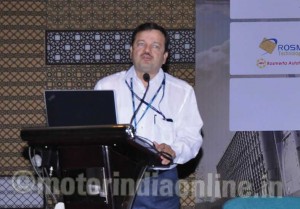
With the growing number of road accidents taking place in India, which has the dubious distinction of topping the global list of accidents, there is an urgent need for introduction of proper vehicle safety systems.
According to Mr. Abhay Damle, Director, Central Institute of Road Transport (CIRT), Pune, there is need for intelligent transport systems (ITS) to ensure commercial vehicle safety. This is possible through the use of event data recorders (EDRs) in CVs through which people inside the vehicle and the pedestrians outside get on-time information on what is happening to the vehicle and what is going wrong inside it. An EDR in a CV is akin to the black box in an aircraft. It records and transmits information real time about the vehicle, minimises loss of property and human lives and helps in post-accident investigation.
With more than 1.38 lakh people having lost their lives in road accidents in 2012, of which more than 70 per cent are due to driver fault and more than 50 per cent to overspeeding, the need for such a device is all the greater.
Mr. Damle has called for ITS-enabled solutions, taking into account all the safety measures to be compulsory adopted. Also necessary is the establishment of city command and data centres which can control and supervise data communication through regulatory mechanisms. Unsafe incidents can be reported by integrating these devices to the police department and emergency services. They can also be recorded with a surveillance camera network.
He is also of the view that more lives could be saved by making vehicles intelligent with the safety device provided in them.
Light weight vehicle body ensures better fuel economy:
Dileep Naik, Tata Motors
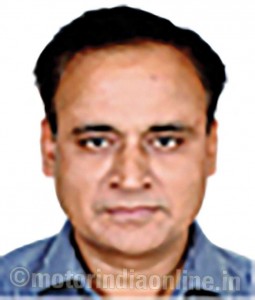
The weight of a commercial vehicle is determined keeping in view the safety requirements, the load carrying capacity and the growing needs of the customer. The vehicle body weight poses a great challenge to fuel economy and emission norms. The weight can be reduced by different methods, including use of high-strength steel with reduced thickness and adoption of lighter materials like aluminium.
This observation was made by Mr. Dileep Naik, Head – Auto Projects & Production Engineering, Tata Motors, while explaining the implications of stamping on light weight vehicle body constructions through his PPT presentation at the CV Summit in Pune.
According to him, the material cost has not changed much from 2007 till now, but the composition has significantly changed leading to cost pressures with changes in material mix. An aluminum-structured vehicle is estimated to be 60 to 80 per cent more expensive than a conventional steel design vehicle.
Mr. Naik summed up the challenges this may pose in the primary process of stamping from the perspective of process, design and also tool manufacturing, and suggested that use of advanced simulation software and high-strength steel in cold forming and advanced die steel material would indeed make light weighting possible.
India to become second largest market for CVs:
Kushal Banerjee, HPCL
With the growing economy and rising domestic demand, the Union Government has been facing the challenge of containing inflation while pushing for growth. For a population of over 1.2 billion in India, nearly 18.49 million vehicles of all categories were sold in 2012-13 alone, involving an annual consumption of nearly two million kilolitres of lubricant oil. Almost 38 per cent of the total lubricant demand is accounted for by the country’s CV industry and the construction equipment segment, with large players like JCB, Telcon, BEML and Komatsu consuming 66,000 kilolitres of lubricants annually.
Mr. Kushal Banerjee, Head – Retail, Hindustan Petroleum Corporation Ltd. (HPCL), Pune, has stated that by 2015, India would become the second largest market for commercial vehicles with five million vehicles on the road.
Explaining the role of HPCL in the Indian and global CV industry, Mr. Banerjee says that his company has been ranked 260th in the Fortune Global 500 rankings in 2013 and the fourth among Indian companies in 2012. With a 20 per cent market share among PSUs in India, it has its strong infrastructural base.
Nissan-Ashok Leyland
Technologies CEO for zero-defect systems production
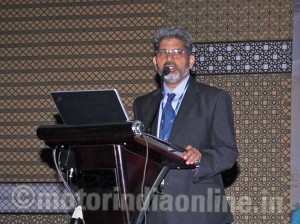
Mr. Nandkumar Khandare, CEO, Nissan-Ashok Leyland Technologies Ltd., is of the view that vehicle manufacturers face a lot of technological and operational challenges due to globalisation, urbanisation, environmental degradation, digitalisation and standardisation. The solutions for this lie in reduced traffic congestion, fatigue-free driving, more efficient road utilisation, lower environmental impact, ownership cost and lower overall carbon footprint, as also development of modular platforms for quick launches in diverse markets.
Technological challenges could be met by downsizing the internal combustion engine, managing costs, reducing vehicle weight and hybridisation. Building greener vehicles which are light in weight and environment-friendly, safer mobility through use of electronics and vehicle management softwares are also some of the challenges OEMs face.
Mr. Khandare further says that there is need to ensure zero-defect production with no room for making errors and for compressing the development cycle with early vendor involvement and synchronising program activities.
Further, OEMs should look at best practices incorporating modular designs and manage complexity through a robust portfolio management while ensuring data integrity across the product lifecycle.
NEFAB offers optimised packaging solutions
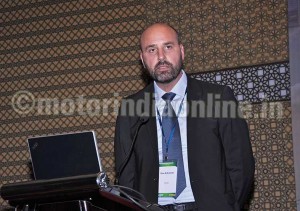
Mr. Peter Bjelovuk, Vice President – Business Unit Vehicle, NEFAB, has said that the company vision is to become a global partner for complete packaging solutions that reduce the total cost and environmental impact. NEFAB strives to reduce the total cost of logistics and its environmental impact with optimised packaging designs of world standard and efficient distribution and product protection with a view to reducing the overall cost.
NEFAB’s strategy is always to make sustainability an integrated part of its value proposition.